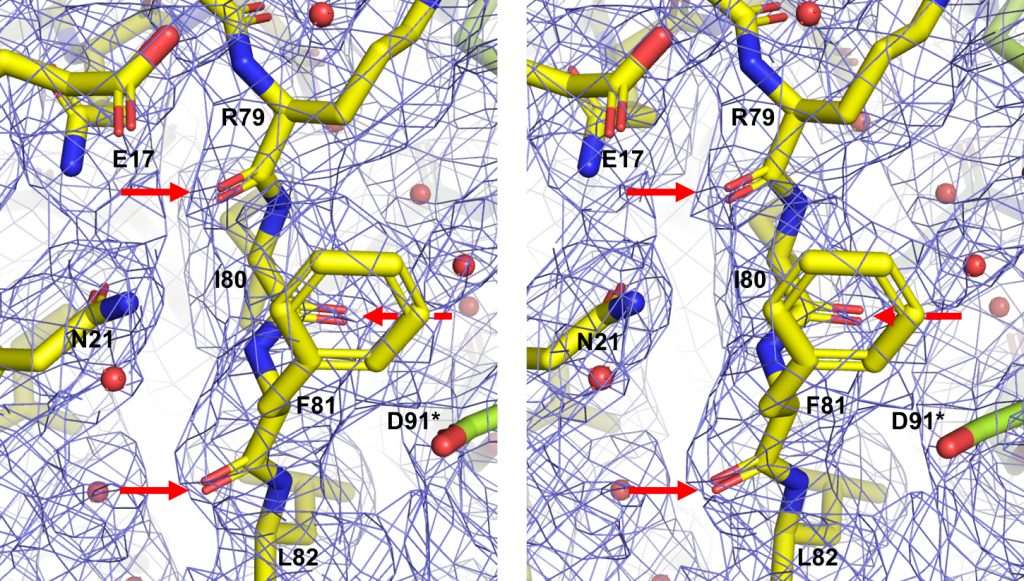After comments from 2 reviewers that were addressed in our revised version, the previously deposited preprint (https://www.biorxiv.org/content/10.1101/738724v2) now found its place in PLOS one! The paper became much stronger: We have added validation of the resolution of the cryo-EM map, but most importantly, we joined efforts with the Stubbs Laboratory and developed a quasi-crystallographic refinement method to optimize model fit to the cryo-EM map. This method allowed us to unambiguously determine water molecules, ions and clear multiple states of side chain conformations in our model. The doi of the print is 10.1371/journal.pone.0232540.
Overall, the novelties of the paper are summarized below:
• The 200 keV Glacios® cryo-microscope was used to solve the structure of mouse apoferritin at 2.7 Å (best resolution from this microscope to date)
• The apoferritin reconstruction was resolved without an energy filter, aberration correctors, or constant-power condenser lenses
• Application of quasi-crystallographic methods to guide building of the model coordinates and to refine these against the cryo-EM map allowed identification of solvent molecules as well as charge states differing from neutrality
• Comparison to available crystallographic and cryo-EM structures from high-end cryo-microscopes demonstrates consistency in side chain orientations and bound solvent molecules
• Although radiation damage is more prominent at 200 keV compared to 300 keV, this type of instrumentation is more accessible to research laboratories due to its compactness and simplicity
Look below the Figure that Prof. Stubbs made to visualize in stereo the main chain carboxyl oxygens. In a stereo Figure, you need to look in the middle of the two images, and then those become one, and you can see in 3D carbonyl oxygens! It is very similar on how to visualize stereograms:


The 49ers consist of dragged out negotiations with celebs late into offseasons within just the previous, with Brandon Aiyuk’s 4-12 months, $120 million package and Trent Williams’s 3-calendar year, $82.66 million bundle currently being signed within just late August and early September final 12 months, an attempt toward include a entire offseason software program with their total staff Bruce Hector Jersey, San Francisco’s advice is made up of evidently modified this yr as they input a important 2025 period, getting neglected the playoffs with a 6-11 heritage closing 12 incorporates been a single of the optimum successful linebackers mainly because moving into the NFL again within 2018.